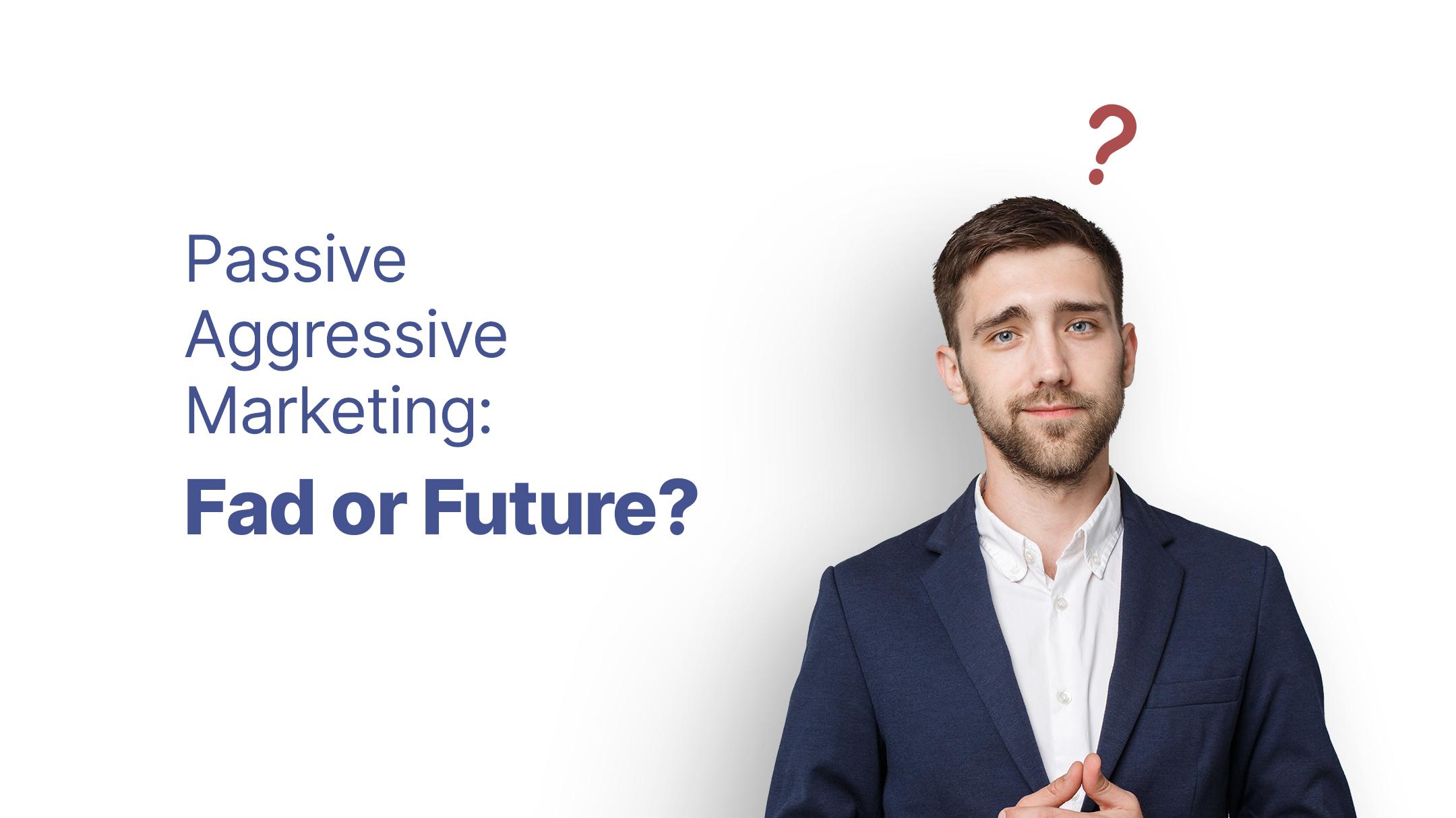
The Trend of Passive Aggressive Marketing: Temporary or Here to Stay?
Are customers amused or annoyed?
Marketing
Are customers amused or annoyed?
Published:
Marketing
Anam Jalil
Share

Have you ever seen creative marketing campaigns showing you a message smothered in passive aggressiveness? Messages that affect your decision-making process by giving you two options to choose from and placing one option as the most logical or ethical choice?
Many brands do this, and this marketing strategy is often used in pop-ups to get potential clients to give away their contact information. Potential customers are either offered a way to save money, make more money or pitched an option that suggests success lies behind hitting that particular button - and they do it blatantly.
But does this work? Do customers respond to such aggressive marketing tactics or do they consider these ads wrong?
Also Read: Social Media Retargeting: Touch Base Again
Let's see if companies are selling rampantly with this messaging or if there are challenges to conquer.
We need to first explain exactly what passive-aggressive messaging is and give examples of strategies that businesses are implementing.
Passive aggressive marketing is like emotional manipulation. Neil Patel's ventures often use this strategy in a pop-up that acts as a lead capture form. You can check an example out below:

So, Neil Patel does it subtly because he is a master of his craft but this is a good representation of how this tactic works.
The Yes button is a different color and shows a message that suggests the little effort it takes to download the guide being offered can result in massive success. On the other hand, the No button is gray and bland and gives an option that makes a person think like they are losing something of value. To elaborate, does anyone ever think they have enough traffic?
Putting "I have enough traffic" on the No button makes the target audience feel a little guilty and perhaps is a good way to sell the CTA and make sure the consumer complies with the demand.
There is another form of passive-aggressive marketing which is when brands make a point to take a dig at competitors without mentioning them by name. Samsung took this position back in 2011 when they subtly targeted Apple by mentioning 4G capabilities, big screens, and other functions that they felt they had an advantage in over the market leader.
Now, Samsung has just gotten aggressive and very direct with their advertising - and isn't very passive about it.
However, do these strategies work on consumers? Are they able to make an impression and increase sales?
Research suggests that the first impression of a passive aggressive message may make customers a little interested - but perhaps only to the extent of reading the message. However, customers that are highly interested in another brand may not fall for this tactic at all and in fact, it may detract value from a brand.
Brands may feel that taking this course is witty and funny, but many identify it as downright rude, pushy, and the last resort measure that doesn't really sit well with most of the target audience and makes the pop-up even more annoying than it is.
Bouvier Kelly states that such strategies do not genuinely make customers switch from one brand to another and perhaps may drive up website traffic a notch, but won't get the business that much further in sales or making a good impression on their audience.
Like this pop-up for example:

Nobody likes paying full price but if a website visitor does not want to give out their information, they have to choose the option which says No, I prefer paying full price, and of course, there is no such thing.
This makes the website visitor feel bad and they may give out their email address but perhaps this won't ever convert them into a customer or make them spend a penny on your brand.
It's mainly about whether or not you use the right word, whether you craft a good story, and whether you have the right tone of funny. It also depends on how valuable an offer you are making your visitors and whether you are just trying to get their email address to make them a lead or are trying to force them to spend money on your products and services with this passive-aggressive tone.
Sometimes, using this to get a lead and then sending your audience a more subtle and less forceful offer when you are retargeting them can constitute an effective marketing plan. You can retarget leads through several strategies:
Social media ads
Email marketing
Direct mail
Cold calling
However, which is the best type of retargeting for a business to use after a passive aggressive lead capture form?
If you have captured a lead and they have given you their information, a social media ad may be a little obtrusive and annoying. Plus you can't really personalize it.
The best way to reduce the effect of your passive aggressive message is to email the customer with a more subtle, polite message that possibly isn't selling them anything but just provides them with some valuable information or says Thank You for their time and for signing up for your newsletter. At this stage, you should just focus on networking rather and building a company image.
Later, your marketing strategy can include an active offer or you can try to win their business by mentioning the advantages of your products or services. Being aggressive in your marketing is likely to anger or annoy your audience - it is very dangerous territory.
In order to seem more authentic to your customer and to build trust, it is important for your message to land in their Priority Inbox. This shows that their email provider trusts you and this can also give them the signal that they should too.
GoCustomer can warm up your email domain to prepare you for a fruitful marketing campaign - more of your emails land in the Priority Inbox and more of your prospects open your emails.
This leads to more conversions and perhaps more money. After all, email marketing is the most lucrative marketing strategy a business can use with a return of $36 on every dollar spent, according to Hubspot.
Let's face it, some companies want to be a little different than the rest. So, they adopt a different style of messaging and it may sound a little passive aggressive.
This passive aggressiveness does not work on everyone and you must be careful with every word you use. However, if crafted properly, you can manage to gather leads that you can then retarget with more polite and less in-your-face and make-you-guilty marketing measures.
Passive aggressive messaging is here to stay and isn't going anywhere. However, you should refrain from using it on social media or when coaxing a customer into buying something. That seems downright rude and pressurizing, and not many potential customers are going to stand for it.
In fact, it may affect your business reputation and people may refrain from buying from you in the future as they feel your message is demeaning or pressurizing.
Simply capture a lead with this style if you must, retarget with a politer email, and then start selling eventually.

Reach more customers with your cold emails
Table of Contents
In a nutshell

Subscribe to our Newsletter!
Digital advice costs money but we send it to
your inbox for free.

Related Blogs


Book a quick demo of our email marketing tools and watch as we transform your leads into loyal customers.

![A loop illustration w-auto h-[70px]](/_next/image?url=%2F_next%2Fstatic%2Fmedia%2Fvector1.7738e6de.png&w=256&q=75)
Get in touch
Subscribe to our weekly Newsletter and receive updates via email.